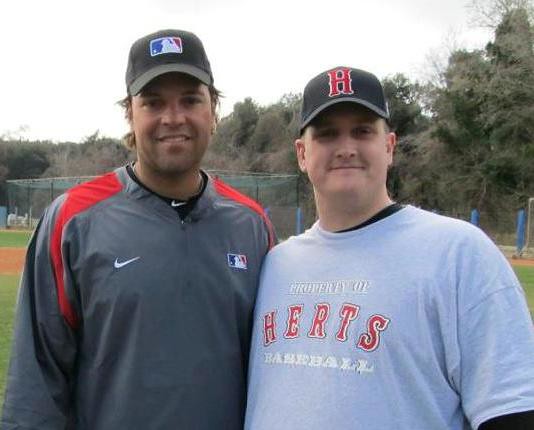
In the winter of 2011 delegates of the National Baseball League (NBL) clubs met in central London to discuss issues at hand ahead of the 2012 season. Among the various items on the agenda was the subject of postseason player eligibility.
Prior to those winter meetings the BBF had a rule in place, which required players to have played in 20% of the regular season games of that team in order to be eligible to play in the postseason. The rule has been in place over the years to ensure that only players who have been part of the team during the regular season are fielded during the high-profile postseason games.
During those December 2011 Winter Meetings some NBL teams felt that 20% is insufficient protection and that the criteria needed to be stricter. Apart from setting a mid-season player registration deadline for postseason eligibility, it was also proposed that the percentage should be increased from 20% to 45%. Most of the NBL teams cast their votes in favour of this proposal and so the 45% requirement was adopted by the NBL (this 45%-rule does not apply to BBF’s minor leagues or youth leagues).
Although the reasons for adopting the 45%-rule are understandable, are there some unintended side effects?
In 2012 the NBL encountered problems with the maintenance of statistics and they were only partially available. This meant that we were not able to see how NBL postseason rosters would be affected and how many players had played in 45% of the regular season games of their team. Estimates would suggest that most NBL teams would have had 10 or less players eligible to play in the NBL postseason – not enough given the gruelling postseason schedule on pitchers, player ejections, potential injuries and player unavailability due to other reasons.
Commendable efforts are being made currently by the BBF to utilise the latest technology to achieve reporting of 100% of all league game stats. If this is accomplished, in 2013 the 45%-rule could prove to be a ticking time-bomb for the NBL and could damage the credibility of British Baseball. We could potentially end up with one or more teams which simply do not have 9 players who meet the 45%-rule and would either have to forfeit games or the BBF would have to issue special dispensations just to make sure that teams have 9 players.
NBL managers reading this article are likely to take note and in fact we have already seen in the first weekend of NBL games that managerial decisions are being influenced by the rule and they are making unnatural lineup decisions and substitutions just to prepare themselves for the effect of the 45%-rule. This implies that there will be times this season when NBL teams will play with under strength lineups, which means that at a time when the NBL is looking to increase the standard of play and attract fans and media interest, the hands of managers will be tied.
Perhaps an even greater concern is the fact that the rule will make some very big stars of British baseball ineligible to play in the postseason games when the BBF is investing resources to showcase the sport to a wider audience. The 45%-rule was not in place in 2009 and Bracknell were able to field some high-profile baseball players who played a few games during the regular season but their other commitments prevented them from reaching the 45% mark. Bracknell won the national title that year. If the 45%-rule was in place they, along with the other NBL teams, would have ended up with significantly weaker rosters.
Assume an NBL team has managed to secure a high-profile player, perhaps one with professional experience in MLB, for example someone like former MLB star, Mike Piazza. The team then registers that player at the start of the season knowing that he would be available only for a few regular season games but most importantly will be there for the postseason. A high-profile player like Mike Piazza would attract hundreds and perhaps thousands of fans to the postseason events if this is promoted correctly. However, with the 45%-rule in this example Mike Piazza would not be eligible to play. Removing the 45%-rule would give teams the incentive to actively recruit such star players, even if it is just for the postseason games. This could potentially place the NBL right alongside the established European baseball leagues of the Netherlands, Germany and Italy.
The world’s most successful sports leagues, from MLB (baseball) to the English Premier League (football), do everything possible to remove such restrictions and allow teams to bring the best talent in the world. The English Premier League’s superiority in world football and ability to win multi-billion dollar TV contracts across the globe is based to a large extent on the fact that the leagues have established the right regulatory environment to give teams the freedom and incentive to sign the best players on the planet.
Obviously, the integrity of league competition has to be protected to avoid movement of players away from clubs who are out of contention. Governing bodies achieve this by imposing a deadline on player transactions such as the MLB trade-deadline in August and the January player transfer deadline in football.
A similar deadline, for example 1 July, would also be appropriate for British Baseball to prevent movement of players away from teams which are out of the postseason race. At this stage of the development of the NBL there is an argument that such deadline should apply only to movement of players from one team to another, while new arrivals who have not been registered with a club during the season should still be eligible to play after the deadline and in the postseason. This would give teams the freedom and incentive to recruit, grow and imporve the standad of play throughout the year, bringing the Mike Piazzas of this world.
None of the leading sports leagues have restrictions such at the 45%-rule. While MLB increases the size of the postseason team rosters from 25 to 40 players, British Baseball rules appear to have the effect of leaving the teams down to the bare bones. Is British Baseball inadvertently making itself less competitive than other European leagues and more importantly, is this damaging the ability of baseball to start winning market share in the competitive UK sports industry? We are currently running a poll on Facebook to gauge the opinion of British Baseball fans on this subject. Click here to take part in the Facebook poll.
.


